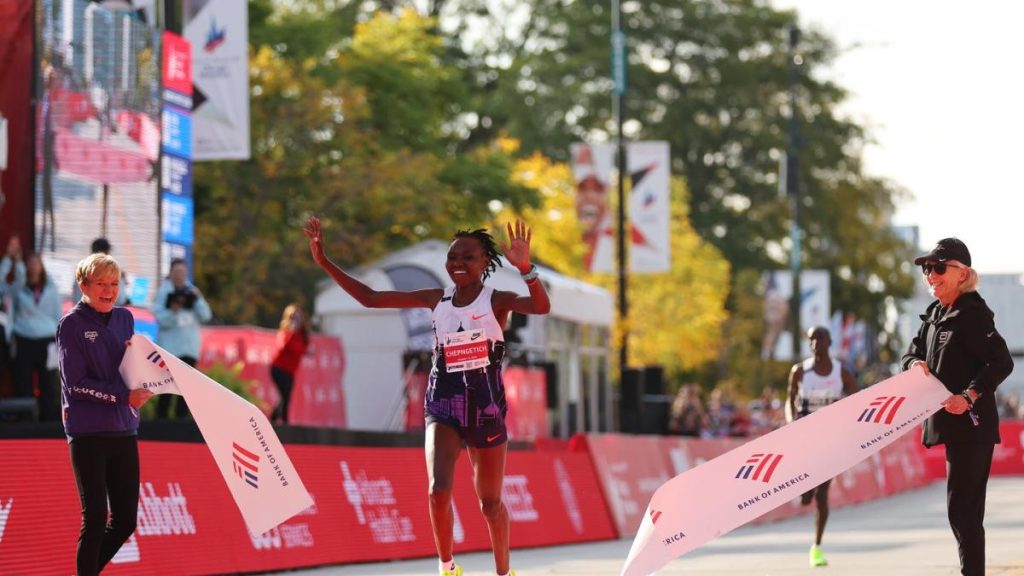At the recent Chicago Marathon, Ruth Chepngetich broke the women’s marathon world record by nearly 2 minutes, running a time of 2:09:56. She was wearing the Nike Alphafly 3, a super shoe that has become popular among elite marathoners. This performance mirrored that of Kelvin Kiptum at last year’s race, where he set a world record of 2:00:35 in the same shoes. The Nike Alphafly 3 retails for $285 and is known for its energy-saving design that helps runners maintain their speed over long distances.
In addition to Chepngetich’s record-breaking run, other athletes at the Chicago Marathon also had success wearing new and innovative shoe models. John Korir won the men’s race in a personal best time of 2:02:44 while wearing an Asics prototype shoe speculated to be the Metaspeed Sky 4. American athletes Lindsay Flanagan, Emma Bates, and Sara Hall were also seen wearing Asics prototypes during the race, with Flanagan finishing as the second American woman in 2:23:31. The shoes worn by these athletes were all recently approved for competition by World Athletics, indicating the ongoing evolution and advancement of marathon racing footwear.
Brooks, another major shoe manufacturer, had a strong showing at the Chicago Marathon as well. Susanna Sullivan was the top American woman finisher, coming in 6th place with a time of 2:21:56 while wearing a development version of the Hyperion Elite 4. Other Brooks athletes, including CJ Albertson and Zach Panning, also performed well in the race wearing prototype shoes from the brand. These results demonstrate the importance of innovative shoe technology in the world of elite marathon racing, as athletes strive to gain a competitive edge and improve their performance on race day.
The success of athletes at the Chicago Marathon wearing new shoe models raises questions about the role of footwear in achieving record-breaking performances. The emergence of super shoes like the Nike Alphafly 3 and Asics prototype models has sparked debate within the running community about the impact of technology on the sport. While these shoes offer significant advantages in terms of energy return and speed maintenance, some argue that they create an uneven playing field and undermine the purity of the sport. As the technology continues to evolve, governing bodies like World Athletics are tasked with regulating the use of these shoes to ensure fairness and integrity in competition.
Despite the controversies surrounding super shoes, there is no denying their influence on the sport of marathon running. Athletes like Ruth Chepngetich and John Korir have demonstrated the potential for record-breaking performances while wearing these innovative shoe models. As manufacturers continue to push the boundaries of shoe technology, it is likely that we will see more athletes achieving remarkable feats on the roads and tracks. The ongoing debate about the role of footwear in marathon racing will undoubtedly shape the future of the sport and how we define athletic achievement in the years to come.


